
Georgia Tech’s “Professors of the Practice” model brings the best of the best—astronauts, CEOs, military leaders, and more—into the classroom.
By: George Spencer
Illustrations: Joel Kimmel
Aerospace engineering student Nick Gaug is living his dream. As a boy in Melbourne, Fla., near Cape Canaveral, Gaug looked in the sky and saw rocket trails shooting to space. One day when he was 12, a fire lit in his mind—he wanted to work on human spaceflight. Today, his advisor—three-time space veteran Sandy Magnus, PhD MSE 96—helps him make internship decisions.
“It’s awesome,” says Gaug, who is entering his second year at Tech this fall. “I’ve met other astronauts, and they can be intimidating, but she’s easy to talk to. I just have regular conversations with her. I couldn’t ask for a better mentor.”
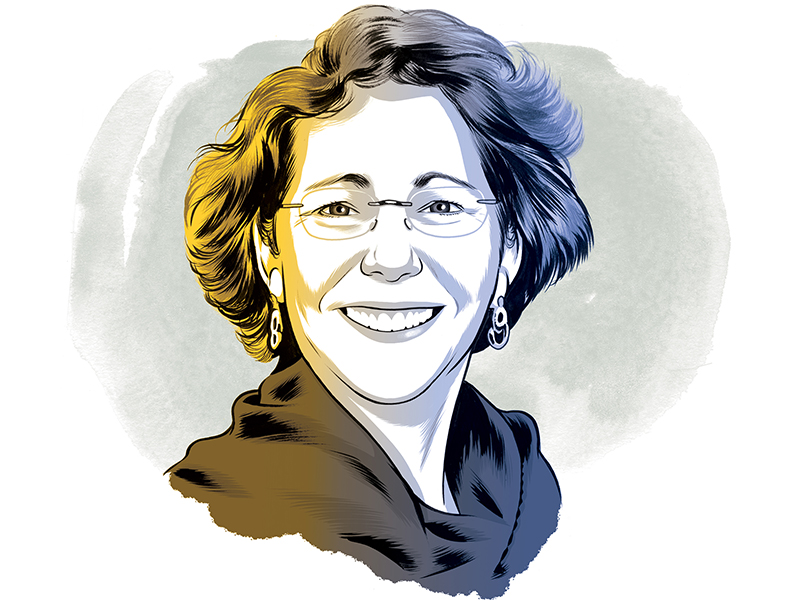
WHAT I’VE LEARNED
SANDY MAGNUS
Professor of the Practice in the Daniel Guggenheim School of Aerospace Engineering, the School of Materials Science and Engineering, and the Sam Nunn School of International Affairs
“FOLLOW YOUR DREAMS—WHATEVER THEY ARE.”
For Sandy Magnus, PhD MSE 96, the sky’s the limit. She flew twice on the Space Shuttle and spent months aboard the International Space Station. “What I tell students is: Don’t put yourself in a box. Don’t put limits on yourself.”
Magnus, who flew on two Space Shuttle missions and spent four months on the International Space Station, teaches part-time in aerospace engineering, international affairs, and materials science. “I’ve been an educator my whole career, since I taught as a graduate student here,” she says. “The students of today are much more accomplished than they were when I was an undergraduate. What I tell them is don’t put limits on yourself.”
This former astronaut is one of Georgia Tech’s best-kept secrets. She’s one of 54 professors of the practice. These world-class leaders hail from diverse fields that range from healthcare administration, supply-chain management, and engineering to military leadership and architecture, and they are all paying it back to younger generations by teaching at Tech.
Some professors of the practice are alumni. Some work pro bono. They all have one thing in common—they share their hard-won expertise by teaching or serving as guest lecturers. They also mentor students and boost the reputations of departments with which they are associated.
“The professors of the practice program gives students the opportunity to explore another dimension—the dimension in industry, or some environment other than academia, in which many will spend their careers,” says Gary Schuster, who was provost and executive vice president of academic affairs in 2008 when the program was created.
“Creating these positions was the obvious thing to do, and the proposal easily sailed through the approval process,” Schuster recalls.
“What students crave these days are two things,” adds Richard Utz, an associate dean in the Ivan Allen College of Liberal Arts. “They want to be challenged with things that have real-world applications, and they want personal attention from instructors. Professors of the practice are our link to the outside world. If we’re in the ivory tower, what we’ve done is lower the proverbial drawbridge that often separates the Academy from industry, government, and the public.”
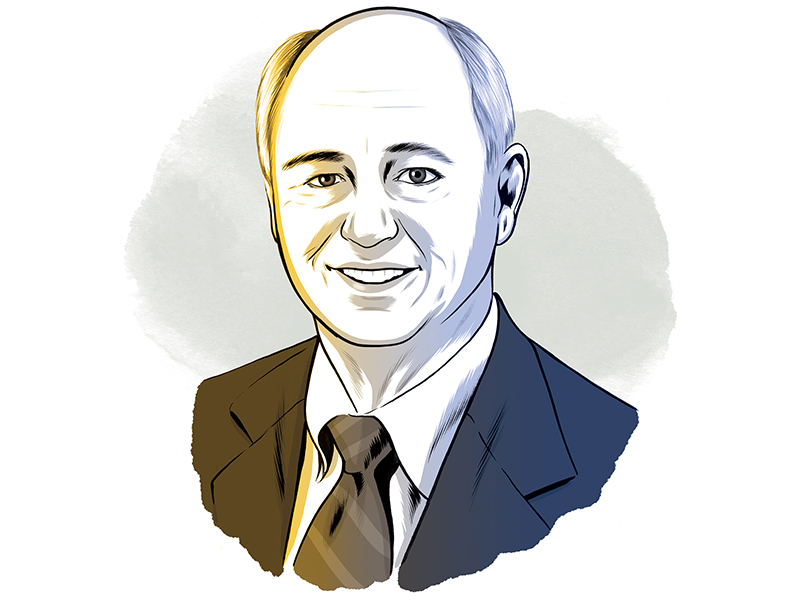
WHAT I’VE LEARNED
BILL TODD
Professor of the Practice in the Scheller College of Business
“WAKE UP EVERY MORNING WITH A SENSE OF PURPOSE.”
Motivation defines the life of Bill Todd, IM 71. His 40-year career in healthcare includes several years as head of the Georgia Cancer Coalition. “What I’m doing as a professor of the practice is giving my students very practical exposure to rich, rewarding careers.”
“Professors like me aren’t about research. We don’t do theory,” says Bill Todd, IM 71. His eye-popping resume in the healthcare industry includes an array of leadership roles—president and CEO of the Georgia Cancer Coalition; founding president of the nonprofit Georgia Research Alliance, which fosters advances in medicine; and senior executive at Emory Hospitals, not to mention being a seven-time honoree in Georgia Trend’s “100 Most Influential” people list.
Every semester since 2011, he has taught Management in the Healthcare Sector, a seminar that gives an overview of that $3.3 trillion industry. He also leads practicums on leadership and healthcare consulting, which he rotates every term. Today, more than 75 of his former students are in medical school or residency.
Todd knows his classes are making a difference. One day a former student told him a startling story. She had interviewed at Johns Hopkins, where she wanted to go to become a doctor. The admissions officer across the table asked her, “What was your favorite course at Georgia Tech and why?”
When she began to describe Todd’s seminar, the interviewer stopped her. He put down his pen and said, “Is that that Management in the Healthcare Sector course we hear so much about?”
Todd flashes a smile and chuckles. “When I heard this, I thought, ‘Oh, my goodness, this professors of the practice thing is working.’ My real-world knowledge of how this broken-down industry works—or doesn’t work—is helping these bright young people in interviews. It’s validation.”
Former student Maggie Kearney, BA 15, agrees. Now a third-year student at Mercer University’s medical school, she deems Todd a “next level” instructor. When she was a senior, she doubted whether she was “good enough” to go into healthcare. “He reminded me of my worth and ability. He finds ways to lift you up. You want to perform for him at the best of your abilities,” she says.
Donna Hyland, the president and CEO of Children’s Healthcare of Atlanta, has seen this acted out every year since 2016. Serving as consultants, Todd’s students analyze pressing issues such as primary care pediatrics and make presentations in her boardroom. “Bill is like a dad sitting there,” says Hyland. “It’s clear how much he cares about his students. We always leave with such hope for the future, seeing the kind of students that are at Georgia Tech and knowing they’ll be our future business leaders.”
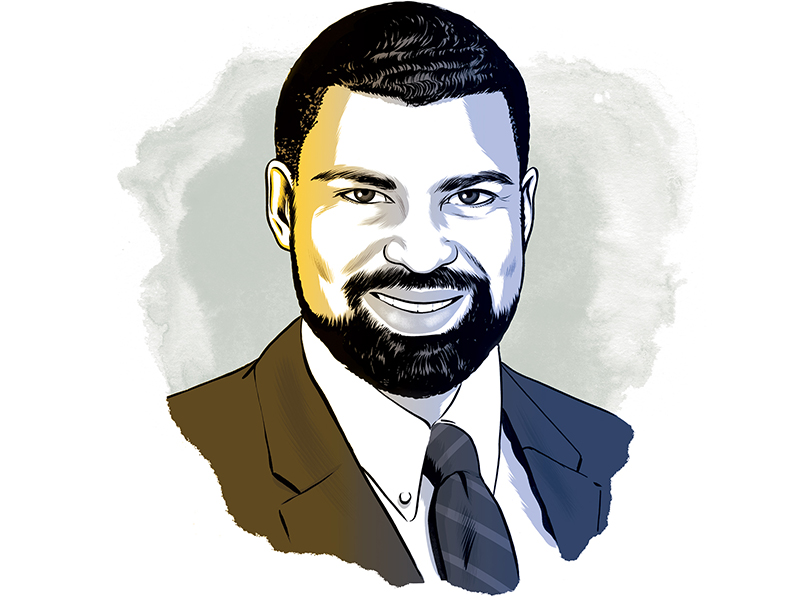 WHAT I’VE LEARNED
WHAT I’VE LEARNED
CHUCK EASLEY JR.
Professor of the Practice in the Scheller College of Business and Advisor with the Institute for Leadership and Social Impact
“CARRY THE BATON FORWARD.”
Former Walgreens and Lowe’s executive Chuck Easley Jr., IM 86, tells his business school students, “You didn’t come to Georgia Tech because it’s an average place and you want a below-average job and a below-average career. Be ready. Run your leg of the race, too.”
Like Todd, fellow Scheller College of Business Professor of the Practice Chuck Easley Jr., IM 86, uses the Socratic method, what’s commonly known as “cold calling.” Easley, a former student athlete and Rhodes Scholar finalist at Tech, learned the technique from one of his professors, Dr. Philip Adler.
“What I do is create a living laboratory,” says Easley, a former Walgreens and Lowe’s executive who shares with students his expertise in business transformation and supply-chain optimization and design. “I find the lecture approach is much less impactful. Students can get catatonic listening and just repeat back to me what I’ve said.”
A great believer in instilling in students the importance of relevance and utility, Easley says, “I’ll challenge them. I’ll ask, ‘How many of you have had an accounting class? When you make a presentation, I expect you to use what you’ve learned.’”
He muses that there is nothing like bringing home to students the importance of understanding accounting. The reason? It’s better they grasp bottom-line realities before they go into the real world. “If you are an executive and there’s a drop in revenue and you don’t know if you’ll be able to make payroll, then you’ll pay attention,” he says.
He puts students in groups, what he calls “weaving into them the team-building process hands-on.” For many, that can be daunting. Some groups become teams, and some remain groups. That’s an important distinction, according to Easley. Though he can teach them textbook principles of interpersonal work relationships, the students themselves must rise or fall to the challenge of collaborating with excellence.
He tells his teams he is the senior partner in their consulting firm. He often has them brainstorm how to solve a campus-related problem and apply the techniques they learn in class to solving the problem, a process that can last as long as six weeks. “They live, breathe, and understand how teams and problem-
solving work, and they reap the benefit of feeling fulfillment for that accomplishment.”
Easley brings the real world to class. In March 2019 after the second mysterious crash of a 737 MAX airplane, he used that tragedy—and corporate crisis—to put students on the spot. “I came in and said, ‘Okay, I’m Boeing’s CEO. I’m on-air with MSNBC in 30 minutes. I’m on CNNfn in two hours. From a marketing standpoint, what do we need to do? Let’s take the nine-step methodology around marketing consulting. What are the most critical things I can tell the media that Boeing needs to do?’ ”
“Cold calling is rigorous. It’s tough,” agrees Todd. About half of his engineering students have never been forced to defend a position in class. “There’s nothing to calculate,” he says. “There’s no right or wrong answer. I’m looking for your critical thinking skills and ability to analyze a situation.”
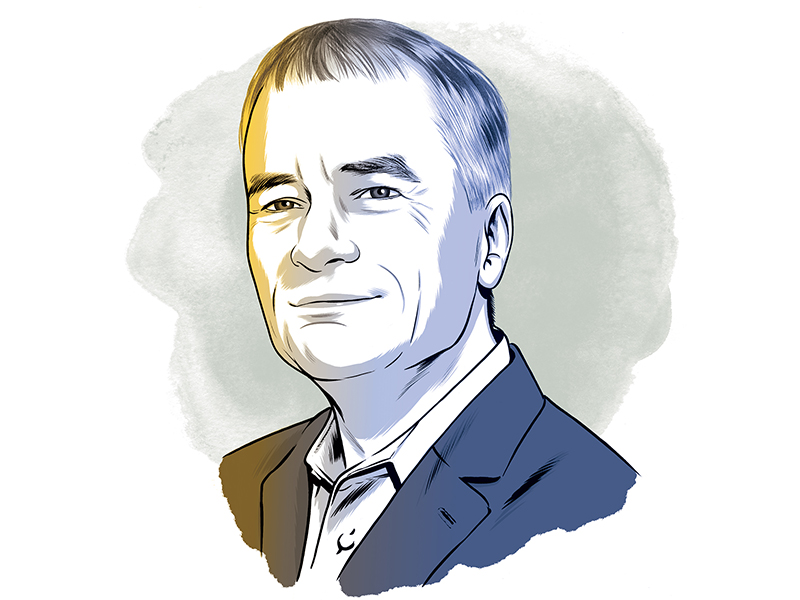
WHAT I’VE LEARNED
ADMIRAL SANDY WINNEFELD
Distinguished Professor of the Practice in the Sam Nunn School of International Affairs and CISTP Senior Fellow
“MANAGE YOUR BRAIN.”
Before he was vice-chairman of the Joint Chiefs of Staff, Adm. Winnefeld, AE 78, flew an F-14 Tomcat fighter. “Naval aviators put stress in a box and control when and where they let it out. That’s how you stay alive at the back of an aircraft carrier when you’re trying to land.”
Someone who knows what it’s like to be put on the spot—and respond intelligently and fearlessly—is retired Admiral Sandy Winnefeld, AE 78, the former vice-chairman of the Joint Chiefs of Staff who teaches in the Sam Nunn School of International Affairs. Prior to serving as the nation’s second-highest-ranking military officer for four years, he commanded the U.S.S. Theodore Roosevelt (CVN-71) Carrier Strike Group and NORAD, the North American Aerospace Defense Command, which protects the U.S. from missile attack.
Winnefeld is no stranger to teaching. After flying the F-14 Tomcat off carrier decks, he was an instructor at TOPGUN, the Navy’s school for elite fighter pilots. “That’s where I cut my teeth on learning how to teach, because our standards were so high,” he says. To earn the honor of lecturing pilots, Winnefeld had to have his presentation critiqued by a “Murder Board,” fellow officers who spent a day tearing apart its smallest flaws.
When asked what makes a good teacher, Winnefeld has a ready answer. “First, you need to think hard about the material from the students’ perspective, how you present it, and how you inculcate in their minds a fundamental understanding of what the topic is about rather than teaching its nit-noid details. For example, if I were teaching math, I’d want to teach the why behind the math. Why is it useful? What are its applications?
“The most important thing is to approach the subject empathetically from the students’ point of view and make it as interesting as possible, so they get energized to learn on their own. You also need to dedicate a little personal time to helping them if they’re struggling and sit down privately with them if they need help.”
Not surprisingly, Winnefeld holds his students to the highest standards. When he helped attorney Joseph Bankoff, another professor of the practice, teach the class Global Issues and Leadership, they winced at students’ poor presentations. Although class members improved as the term went on, both men knew they had to drill better speaking skills into their next crop of students.
When the course was offered again, they wanted students to start from a firmer foundation, so they focused its first session on the art of giving presentations. Even then, students did not get off easy. They ultimately had to appear before their own “Murder Board,” an all-star panel that included Winnefeld, former Senator Sam Nunn, and Distinguished Professor of the Practice Gen. Philip Breedlove, CE 77, the former Supreme Allied Commander of NATO.
“I tried to make it so students weren’t intimidated by me personally, but it had to be tough for them to stand in front of a former Senator, an Air Force general, a Navy admiral, and who knows who else Joe brought in,” Winnefeld recalls.
Winnefeld knows that writing a brilliant paper, a skill drilled into students, is only the first part of the battle once they graduate. “You’ve got to present it, too,” he says. “If you want to be successful in the policy world, you’ve got to be comfortable presenting credibly to senior people who are going to ask you tough questions, and that’s why we brought in the people we did.”
Dan Aum, a PhD student in international studies, gets a double-barreled dose of professional training. He works as research assistant to Winnefeld, who is collaborating with Breedlove on a scholarly paper.
“Admiral Winnefeld has a four-star mind,” says Aum. “He’s not someone who pushes out orders. He’s a keen observer of people’s processes, motivations, and priorities. So, when he shares his insights, I get to see those processes through his sharp perceptions. I get feedback from someone with his level of experience and get a sturdy sense of whether ideas will work or not in the real world.”
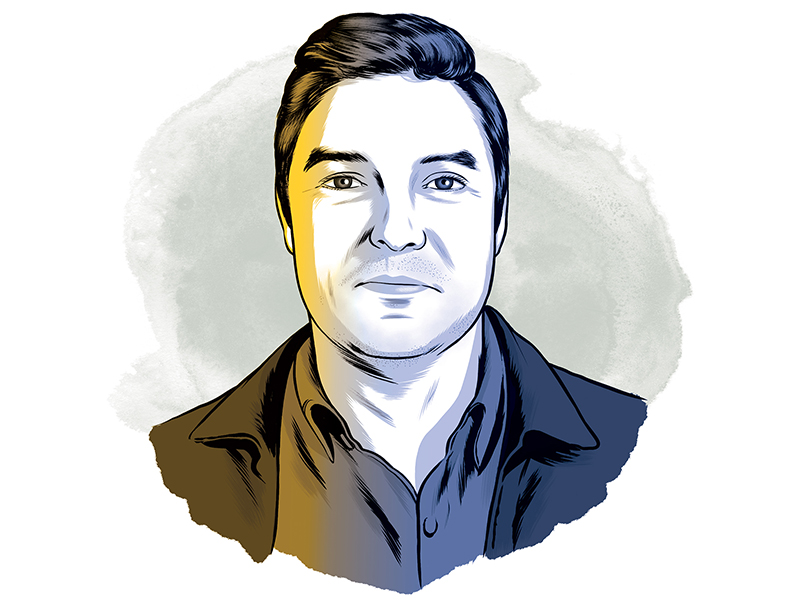
WHAT I’VE LEARNED
MICHAEL MURPHY
Professor of the Practice, Thomas W. Ventulett III Distinguished Chair in Architectural Design
“DESIGN IS NEVER NEUTRAL. IT HELPS, AND IT HURTS.”
Design decisions have impact on lives and on places,” says Murphy, executive director of the Boston-based MASS Design Group. “It’s the architect’s responsibility to fight for and aim for design decisions that have the most positive impact they can on people’s lives.”
The real world is pounding architecture graduate students Will Reynolds and Chas Clark, and it is hitting them in the seats of their pants. They are riding in Toyota Land Cruisers on a bumpy dirt road from Kigali, the capital of Rwanda, to Kinigi, the mountain village near Volcanoes National Park where primatologist Dian Fossey studied endangered mountain gorillas.
They and 10 other students spent a week in March 2022 in this eastern African nation with their Professor of the Practice Michael Murphy, the founder and executive director of MASS Design Group. His Boston-based nonprofit has received acclaim for its human-centered structures that act as a kind of “living, breathing organism that can change us and change with us.”
MASS has built hospitals, research facilities, and university buildings in Rwanda. He and his students have come to the highlands to tour MASS’s buildings and to solve a problem. The park’s growing popularity has led to its expansion. Local villages must be moved, and the government has asked Murphy—and his students—to speculate on the nature of these new government-sponsored green model villages.
“This is an exercise to see what a real project might look like and then to use students’ skills to imagine this scenario,” says Murphy. This is his first semester teaching at Tech. “My students are totally amazing and just completely curious, driven, creative, and technically adept. I’ve just been incredibly impressed,” says Murphy, whose environmentally conscious work made him the focus of a recent 60 Minutes profile.
Clark and Reynolds get 24/7 quality time with him. When they’re not bouncing over bad roads with Murphy, they hang out together. They drink coffee at breakfast with him and they eat dinner with him, feasting on barbequed goat, pickled vegetables, stewed greens, and local Primus beer. “It’s like Southern cooking,” raves Clark, though Reynolds admits, “The banana beer took some getting used to.”
They also tour construction sites. “It’s been incredible to see Michael walk through projects he’s familiar with but hasn’t yet seen in person,” says Reynolds.
“It’s a rare time when you can see something in real life that you’ve been studying and not only that but with the person who designed it!” adds Clark.
Two things Murphy said to the class stick in Clark’s mind. One is a quote from Martin Luther King’s “Letter from a Birmingham Jail”—”We are caught in an inescapable network of mutuality, tied in a single garment of destiny. Whatever affects one directly affects all indirectly.”
“The other quote was brilliant,” says Clark. “He said, ‘What people hate is being told what to think. What people love is being brought into the conversation about what’s possible,’ and I think that’s how he approaches life and architecture and design.”
More than a decade ago, healthcare executive Todd was “incredulous” when Tech offered him the opportunity to teach. He “jumped at it,” and it has been one of the most fulfilling things he has ever done. As past board chairman of the Georgia Tech Alumni Association, he knows that as Tech has transitioned from a regional to a world-class engineering school over the past half century, some alumni have feared that undergraduate teaching has suffered.
“The concept of professors of the practice is a relief valve for that worry,” he says. “We’re not researchers. We’re at the tail ends of our careers. I spent 20 years funding biomedical research. That was so macro. This is quite micro. This is one student at a time, and that’s very satisfying to me.”
